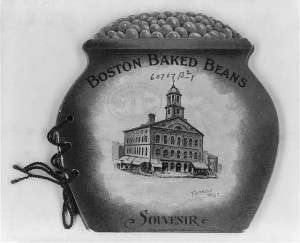The truth is more interesting than the legend about the golden grasshopper perched above Faneuil Hall since 1742.
The real story links the golden grasshopper to tracts of land in Maine, includes a secret within its belly and a tale of theft and recovery.
According to the legend, the golden grasshopper weathervane was a gift from coppersmith Shem Drowne to Peter Faneuil. Faneuil, a wealthy merchant and slave trader, donated Faneuil Hall to Boston.
Legend further has it that Shem Drowne got discouraged by his many failures in colonial New England. He lay down in an open field, and upon waking saw a boy chasing a grasshopper. Shem watched and talked with the boy, who took him home to his wealthy parents. They gave him dinner and later adopted him. The golden grasshopper weathervane commemorated that turning point in his life.
The Real Story
The real story? Above London’s Royal Exchange a grasshopper weathervane perched, recognized around the world as a symbol of commerce. (It’s still there.) Peter Faneuil Hall built his hall on Boston’s then-shoreline, and he no doubt intended it as a symbol of commerce, a beacon to ships that put into Boston Harbor.

Peter Faneuil
Faneuil Hall became a hub of commercial activity, a launching pad for independence from Britain and a center of abolitionism. As one historian put it,
In old Faneuil, that guild temple of traders and aldermen, butchers and clerks, hucksters and civic magistrates, the spirit of the people conceived an embryonic nation.
Shem Drowne
Shem Drowne was born Dec. 4, 1683 in Eliot, Maine. His father, Leonard Drowne, was a shipbuilder from England. The family left Maine for Boston in 1699 to escape violence following King William’s War.

Cover of souvenir album of historic sites of Boston, shaped as beanpot, with illus. of Faneuil Hall. Courtesy Library of Congress.
Shem Drowne married Katherine Clark on Sept. 18, 1712 in Boston. She inherited tracts of land in Maine known as the Pemaquid Patents. Shem gained power of attorney from the other heirs. He then went to court to eventually control what became known as the Drowne Claim, which encompassed Bristol, Bremen, Damariscotta, and parts of Newcastle and Nobleboro. In 1746, he bought Monhegan Island in Maine for 10 pounds, 13 shillings.
He was also a coppersmith and Boston’s first tinplate worker, with a shop in the North End.
In 1716, Shem Drowne made America’s first documented weathervane, a gilded archer on top of the royal governor’s house. He created a rooster weathervane for the New Brick Church on Hanover Street. (It now sits on top of First Church in Cambridge.) He also made the copper swallowtail banner vane atop Old North Church in Boston.
In 1742, he made the copper grasshopper weathervane with glass eyes for Faneuil Hall. It was later gilded.
‘I shall vary as the wind’
In 1755, an earthquake threw the golden grasshopper to the ground, severing a leg. Boston selectmen voted to pay Shem Drowne’s son Thomas to repair it. Thomas made a time capsule with the words ‘food for the grasshopper’ on it. He placed it in the grasshopper’s belly with a note:
To my brethren and fellow grasshoppers, Fell in ye year 1753 (1755) Nov. 13, early in ye morning by a great earthquake by my old Master above. Again, like to have met with Utter Ruin by Fire, by hopping Timely from my Public Station, came of the broken bones and much Bruised. Cured and Fixed. Old Master’s son Thomas Drowne June 28, 1768, and Though I will promise to Discharge my office, yet I shall vary as ye wind.
Messages From Mayors
Since then, the golden grasshopper has been periodically refurbished, and new items placed in the time capsule, including historical newspapers, coins, and messages from mayors.
The golden grasshopper became a symbol of Boston. According to another legend, three men who said they came from Boston asked for aid from Samuel Cooper, American consul in Glasgow. Cooper, a Bostonian, asked them what was on top of Faneuil Hall. One said a fish, one said a horse, the third said a grasshopper. He is alleged to have said to the third, “I will give you all the assistance you need, but the other men will have to walk to Boston.”
Shem Drowne died January 13, 1774.
The Golden Grasshopper Heist
Almost exactly 200 years later, someone stole the golden grasshopper. Paul Revere Carroll, a direct descendant of Paul Revere, was the police detective in charge of the case. He got a phone call from Plymouth County’s district attorney saying he had part of the grasshopper.
They met in Boston’s Park Square and the DA handed him a paper bag with the spire in it. He led police to the Faneuil Hall tower, where rags covered the rest of the golden grasshopper.
It turned out a steeplejeack who’d been arrested on drug charges had stolen it, but confessed to the crime in hopes of getting a plea bargain in his drug case. The grasshopper was regilded and replaced, but with a locking device so it couldn’t be stolen again.
With thanks to Faneuil Hall and Faneuil Hall Market: Or, Peter Faneuil and His Gift by Abram English Brown. Color image of Faneuil Hall: By Tony Fischer. This story was updated in 2020.


